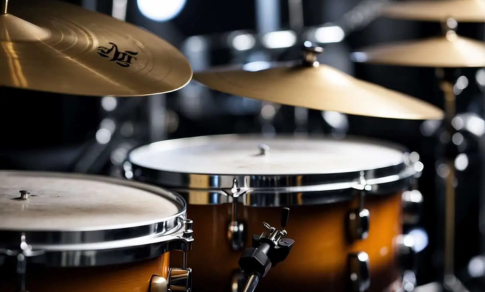Drums have a rich history in Nigerian churches, transitioning from being banned by early missionaries to becoming a staple in contemporary worship. This journey reflects broader cultural and religious dynamics, shaped by missionary influence and the push for indigenization. Below, this article explore their cultural roots, the initial ban, and their revival in church settings.
Read more about Gospel music
Historical Context: Drums in Pre-Christian Nigerian Culture
Drums have been an intrinsic part of Nigerian cultural heritage for centuries, serving multiple roles beyond mere musical accompaniment. They were used for communication, storytelling, and spiritual connection, deeply embedded in the social fabric of various ethnic groups. For instance, the Yoruba people utilized the talking drum, or dundun, which could mimic the tones and inflections of their language, enabling messages to be sent across villages. This drum was not only a musical instrument but also a vehicle for preserving oral literature, including proverbs and historical poems, as noted in historical accounts.
The Igbo community employed the ekwe, a hollowed-out log drum, to announce important events such as weddings and festivals, as highlighted in cultural studies. Drums were also central to religious rites, invoking ancestral spirits and marking rites of passage, reflecting their profound symbolic meaning within African traditions. This cultural significance is evident in the diverse drum types, such as the Bata drums unique to the Yoruba, used in sacred and social contexts.
Register to attend the Connect Nigeria Business Mixer
Missionary Influence and the Ban on Drums
The arrival of Christian missionaries in the 19th century marked a significant shift, as they sought to align Nigerian church practices with Western norms. Missionaries, particularly from Protestant denominations, viewed traditional African music and instruments, including drums, as heathen and associated with pagan rituals. This perspective led to a ban on drums in church services, with a preference for European-style hymn singing accompanied by organs or harmonicas.
Historical accounts reveal that the Church Missionary Society (CMS) in Yorubaland explicitly prohibited drums, dancing, and hand-clapping, aiming to suppress indigenous musical expressions. This ban was part of a broader cultural imposition, where African instruments were seen as demonic due to their association with local deities, as noted in reflections on missionary activities. This period saw a significant loss of cultural identity, with churches rejecting local musical genres in favor of imported instruments, reflecting the missionaries’ mislabeling of African music as “primitive”.
Sign up for the Connect Nigeria daily newsletter
The Revival and Integration of Drums in Nigerian Church Music
Despite the ban, the desire for indigenization persisted, leading to the emergence of African Independent churches, which played a pivotal role in reintroducing drums. These churches, founded by Africans to suit local contexts, sought to blend Christian beliefs with indigenous cultural practices. The Cherubim and Seraphim Church, established in 1925, and the Christ Apostolic Church are notable examples, opting for simpler Christian music with traditional instruments, including drums, accompanied by ecstatic dancing.
This movement gained momentum in the late 19th and early 20th centuries, with youth fellowship groups introducing choruses and call-and-response formats, facilitating the use of drums. The Aladura churches, such as the Celestial Church of Christ, further popularized drumming, reflecting Yoruba cultural preferences and attracting congregations with vibrant worship styles. Over time, even mainstream churches, influenced by the growth of neo-Pentecostal movements in the 1980s, began adopting drums, recognizing their appeal to younger generations and their role in enhancing worship.
Today, drums are widely used in Nigerian churches, symbolizing a fusion of tradition and Christianity. A 1996 study in Kenya, referenced in Nigerian contexts, found that 70% of Christians enjoyed musical instruments with choruses and clapping during services, indicating a global shift also. This integration is supported by biblical references, such as Psalm 150, which advocates for praising God with various instruments, enhancing cultural relevance and worship interest.
Got a suggestion? Contact us: [email protected]
Conclusion
The journey of drums in Nigerian churches from being banned to widely used underscores the resilience of cultural identity against colonial influences. The initial prohibition by missionaries gave way to a revival driven by African Independent churches, culminating in a vibrant integration that enriches contemporary worship. This evolution not only preserves Nigerian musical heritage but also strengthens the connection between faith and culture, offering a model for other post-colonial religious contexts.
References

